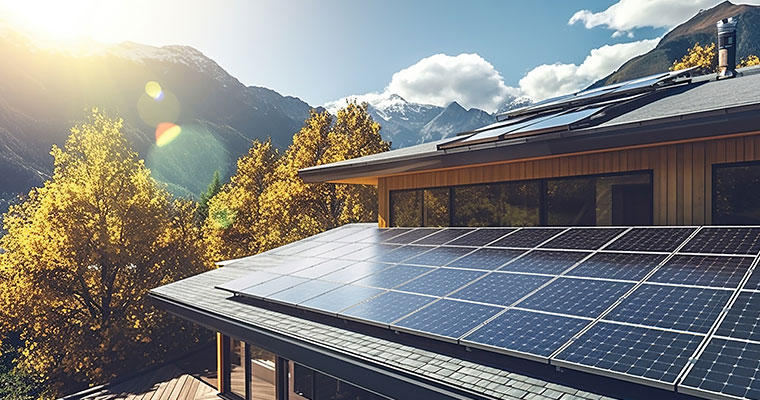Sustainable Home Design Whitefish, Montana – 8 Eco-Friendly Ideas
In a place surrounded by natural beauty, it is no surprise that sustainable home design in Whitefish, Montana is such a priority.
The town of Whitefish is at the forefront of sustainable living and conservation, with numerous programs and ordinances aimed at reducing the area’s carbon footprint.
Local landowners have also taken up the challenge by embracing sustainability in property development.
So, what are the top sustainable home design trends in 2024 to consider when building a sustainable home in Whitefish, Montana?
When it comes to building sustainably, every little bit helps.
No matter if you are a Whitefish local or not, the 8 trends below will give you some ideas for creating your eco-friendly home:
- Selecting The Most Suitable Home Location
- Selecting the Right Home Size
- Orientating the Home for Natural Light and Heat
- Designing An Efficient Layout
- Using of Local and Recycled Materials
- Utilizing High R-Value Insulation
- Integrating Energy-Efficient Appliances & Home Technology
- Using Renewable Energy
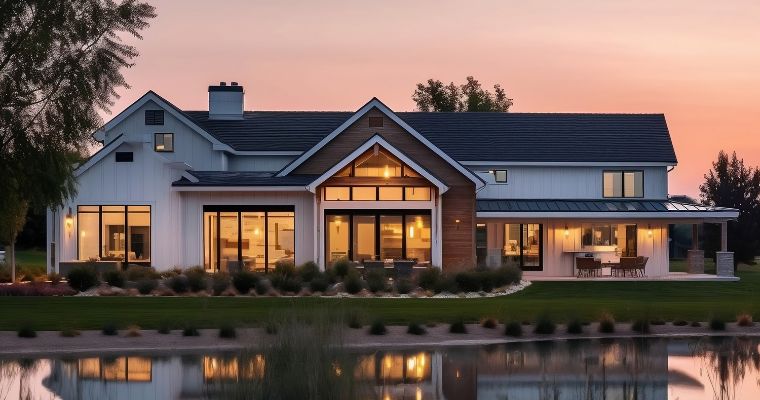
8 Sustainable Home Design Trends of 2024
Energy-efficiency is the name of the game! Property owners across the US are incorporating the latest innovations into their builds. Whitefish, Montana is like ground zero for the green revolution.
Here are 8 sustainable home design ideas for your property:
1. Selecting The Most Suitable Home Location
Location, location, location…. you’ve heard it before, and it remains true when it comes to creating a truly sustainable home design.
The very first step to creating a sustainable home is choosing a location that aligns with those goals.Homes require roads, pipes for plumbing, power lines, and fiber optic cables for the internet. It can be disruptive to the environment to install these necessities, so the most eco-friendly option is to choose a location that already has access to this infrastructure. If a location has room for multiple homes, then they should be built relatively close together. This allows space for the local wildlife and permeable surfaces to safely absorb rain water.
It is also important to not select a location that is prone to natural disasters. Avoid building in flood zones, tornado touchdown zones, near fault lines, or too close to the ocean. If damage occurs to your home, it isn’t very sustainable to have to rebuild it completely.. Avoid the waste of resources by choosing a safe location.
The final consideration for sustainable home design Whitefish, Montana is proximity to amenities. When homes are built in the middle of nowhere, the residents have to drive somewhere every time they need groceries, want to do activities, or need to see a doctor. Car-dependent architecture forces people to drive everywhere, which contributes to air pollution.
A better option is to build homes on locations that are close to public transit and have schools, grocery stores, restaurants, pharmacies, and stores within walking distance.
2. Selecting the Right House Size
Smaller houses are generally better for the planet than larger houses. Not only do big homes require more building materials, they also use more energy to heat and cool.
Tiny homes are a popular option for homeowners who want to live a more eco-friendly life. In addition to their size, tiny homes can be more sustainable because they usually have composting toilets, solar panels, and greywater systems built in.
Multifamily buildings like condos and apartments are also a green alternative to single family homes. Apartments are able to house more people on less space, require fewer miles of road and pipes, and can be heated more efficiently.
Mixed use apartment buildings also allow for shops and restaurants to be nearby, so residents are able to walk more and drive less.
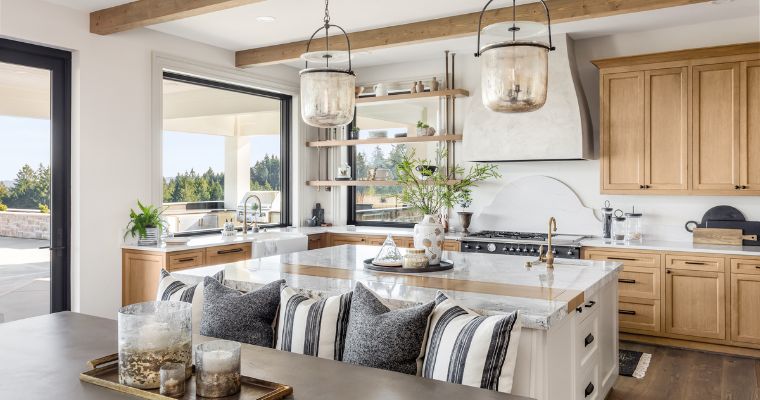
3. Orientating the Home for Natural Light and Heat
Builders who specialize in sustainable home design Whitefish, Montana also consider orientation when creating an eco-friendly house.
The purpose of orientation is to maximize solar gain for natural heating and minimize overheating by creating a cross breeze.
Since Montana is in the northern hemisphere, the largest windows in the home should be south facing.
These windows must also have seasonal horizontal shading to control seasonal sun exposure. In the summer when the sun is the highest, these block unwanted solar from overheating the house. In the winter when the sun is lower, the sun can shine directly into the windows and warm the home.
The length of the home should be oriented east-west.
When builders place openable doors and windows along the length of the house, a cross breeze can flow through the house to cool it down. These small considerations will save homeowners money on climate control as well as conserve resources.
4. Designing An Efficient Layout
A home layout can also be optimized for sustainability. Compact homes are a better choice than sprawling homes. Builders should avoid high ceilings, which will take a lot of resources to heat and cool.
In general, it is more efficient to build up rather than out. A 2,000 square foot home that consists of two 1,000 square foot floors is better than a home that is one story.
One reason for this is the roof size. The roof of a home is responsible for a lot of heat loss.
A smaller roof means that the home retains more heat; there is also the added benefit of a smaller roof using less materials during its initial construction and later repairs.

5. Using of Local and Recycled Materials
Recycling is a well-known element of eco-friendly housing and living. It is always more sustainable to reuse and repurpose existing materials than to use brand new materials.
Green home builders in Montana routinely use the following recycled materials in local homes:
- Reclaimed wood
- Recycled metal
- Repurposed cork
- Old shipping containers
- Papercrete, grasscrete, timbercrete, and hempcrete (alternatives to concrete)
- Recycled plastic
However, a home doesn’t have to be made entirely of recycled and renewable materials to be considered sustainable.
Sourcing green materials may require transporting them from across the country. In this case, the more sustainable option would be to use local materials. In Montana, construction sand, gravel, lime, crushed and dimension stone, talc, clay, and silver are produced locally.
6. Utilizing High R-Value Insulation
Natural climate control and insulation go hand in hand when it comes to sustainable home design in Montana.
Insulation is what allows a home to retain its current indoor temperature. A properly insulated home can minimize the need for heating and cooling, which reduces your carbon footprint.
Generally, insulation is measured as R-value, which is a number representing the material’s resistance to heat flow. Homes in Montana should have R49 to R60 insulation in attics and R25 to R30 rated insulation in floors.
Another aspect of insulation is air sealing. This is the process where builders use caulking or weatherstripping to seal up cracks through which warm air can escape. Generally, caulking is used to seal immobile parts of a home and weatherstripping is best for moveable parts of a home, like doors.
7. Integrating Energy-Efficient Appliances & Home Technology
Sustainable home design in Whitefish, Montana goes beyond the shape and building materials of the home; it also extends to what is inside the home.
The best additions to a building project are:
- Energy Star appliances
- Toilets, sinks, and showerheads that use less water
- Hot water recirculating pump
- Geothermal heat pump
- LED lights
- Solar hot water heater
- Tankless hot water heater
Not only do these appliances and technologies use less water and energy, they are also built to last longer. Homeowners will be thrilled at the long-term cost saving that they provide.
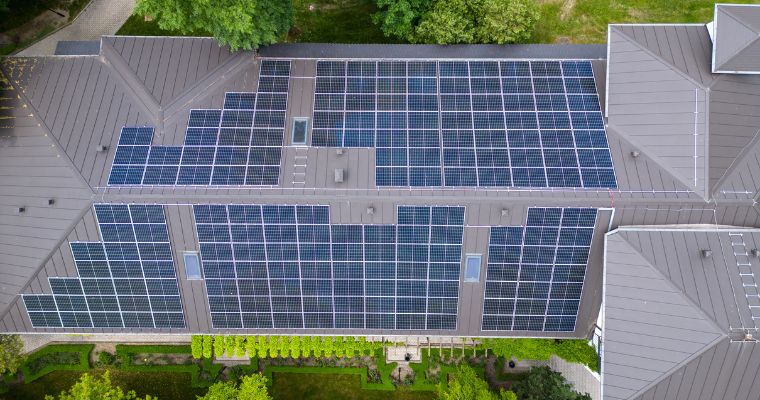
8. Using Renewable Energy
The most well-known and commonly installed renewable energy source are solar panels.
They are made up of photovoltaic cells that transform energy from the sun into electricity that can power the home. However, solar panels are not a monolith.
There are 3 types of solar panels:
- monocrystalline solar panels (expensive, relatively high efficiency rate, and can last 25 to 40 years)
- polycrystalline solar panels (14% to 17% efficiency rate. Medium cost)
- and thin Film solar panels (best for sheds and garages. Cheap, low efficiency, and only last 10 to 20 years).
Property owners also have lesser known options for reducing their carbon footprint, like installing a wind turbine.
Most people picture the huge, towering turbines that can be found in wind fields, but there are plenty of small-scale turbines designed for homes. Adding a wind turbine to your roof or yard will provide your home with clean, renewable energy.
Depending on your property’s location, the weather, and the construction of the turbine, it can reduce your electric bill by 50% to 90%.
What Does Environmentally Friendly Home Design Look Like in Whitefish, Montana?
A fantastic example of sustainable living sits right here in Whitefish.
Built by Eco Residency, the beautiful home at 158 Mountain Brook Lane utilizes a variety of sustainable design elements, including:
- Home and window orientation to maximize passive solar heating
- Energy Star appliances (refrigerator, dishwasher, over, washing machine, dryer, etc.)
- Built with reclaimed wood and other recycled materials
- LED lights in all rooms
- Energy-efficient HVAC system
- Passive radon system
- Solar-ready infrastructure
- High-quality insulation for Montana winters
- It was built on property with easy access to infrastructure
- Minimal concrete on the property for water absorption
- No seeded grass lawn, so homeowners can choose a biodiverse lawn
158 Mountain Brook Lane is the first of many beautiful, sustainable homes in Whitefish! Eco Residency is partnering with landowners all over Whitefish to create homes geared towards the future.
Whether you have a vision for your sustainable home design Whitefish, Montana or want a modern commercial space for your business, we can help! Contact Eco Residency today to discuss your vision with us.

What Are the Newest Sustainable Home Design Trends?
Green buildings can come in all shapes and sizes.
It is possible to build a carbon neutral home in nearly any architectural style to match the lifestyle of the homeowner. However, there are a few styles of sustainable houses that have really taken off:
Prefabricated Homes
These are homes that get assembled in one location and then moved to the owner’s property.
Prefab homes are better for the planet than traditional homes because they use fewer building materials, use less energy to construct, are built to be durable, reduce transportation pollution, and are designed with solar panels already installed.
Tiny Homes
Some tiny homes are also prefab homes.
Smaller homes are better for the planet because they use fewer building materials, come with composting toilets and solar panels, require less energy to heat and cool, and can be placed very close together to preserve greenspace.
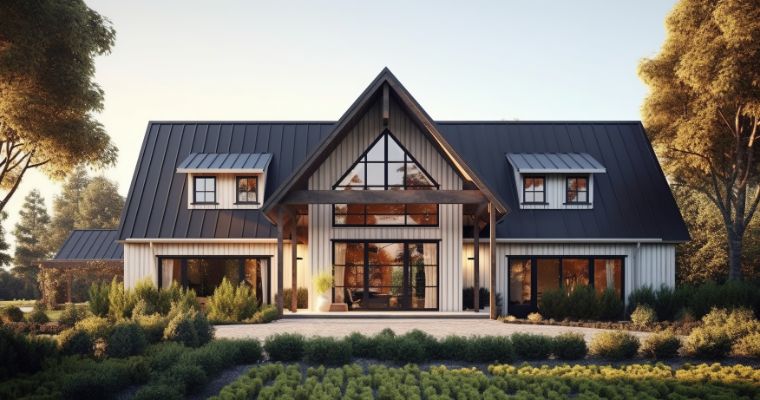
Earthships
Earthships are structures built by filling old tires, bottles, and cans with cement and mud.
They are built into the earth for natural cooling and a south-facing wall is typically made entirely of recycled glass for passive solar heating. Some earthships can be self-sustaining through solar panels, small scale wind turbines, rainwater collection, and greywater systems.
Straw Bale Homes
Straw Bale Homes are exactly what they sound like: bales of straw are stacked together to form the structure of the home, then sealed and covered in plaster.
Although still rare, this type of home is one of the newest sustainable home design trends that has started taking off. Because the walls, roof, and foundation are so thick, these homes have great natural climate control.
Work With The Experts!
Many types of green buildings are still relatively new, so municipalities and states have not yet developed regulations and building codes for them. Additionally, some of these structures are only suitable in certain climates.
If you are interested in building a unique type of sustainable home on your property, give Eco Residency a call.
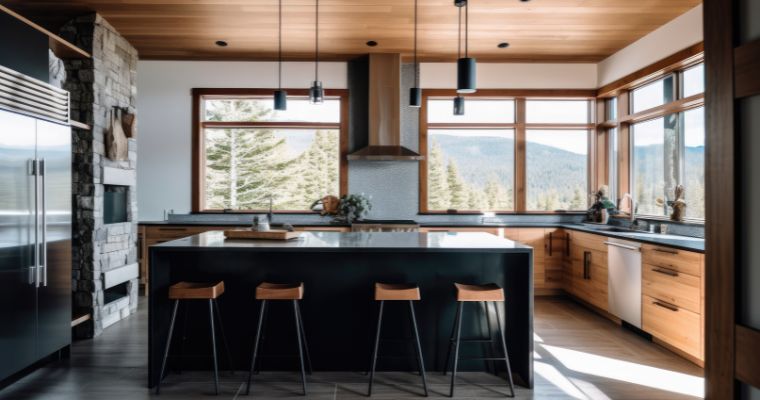
Frequently Asked Questions About Sustainable Home Design Whitefish, Montana
A circle or cube house is the most sustainable. Simple shapes use fewer materials, retain heat the best, and have better airflow than homes with a more complicated layout.
An eco-friendly home is any type of house that was built using recycled materials, optimized to conserve resources, and designed with limited environmental impact in mind. Eco-friendly housing and living can range from self-sustaining, net zero homes like earthships to traditional homes that have been outfitted with solar panels and Energy Star appliances.
1. Durability
2. Energy efficiency
3. Waste reduction
4. Sustainable building materials
5. Indoor air quality
6. Water conservation
7. Sustainable planning and design
The design of sustainable homes protect the environment in 3 ways:
1. Reduce waste, so fewer building materials end up in the landfill or polluting waterways.
2. Use renewable resources to reach carbon neutrality; this will limit air pollution and the effects of climate change.
3. When homes use space efficiently, they take up less space and require less infrastructure, therefore limiting disruptions to the ecosystem.
Let’s Make Whitefish a Greener Place to Live!
Whitefish is surrounded by natural beauty.
Let’s keep our home green and beautiful through eco-friendly housing and living. If you are interested in building yourself a new home on your property or creating green buildings to rent out, get in touch with the Eco Residency team!
